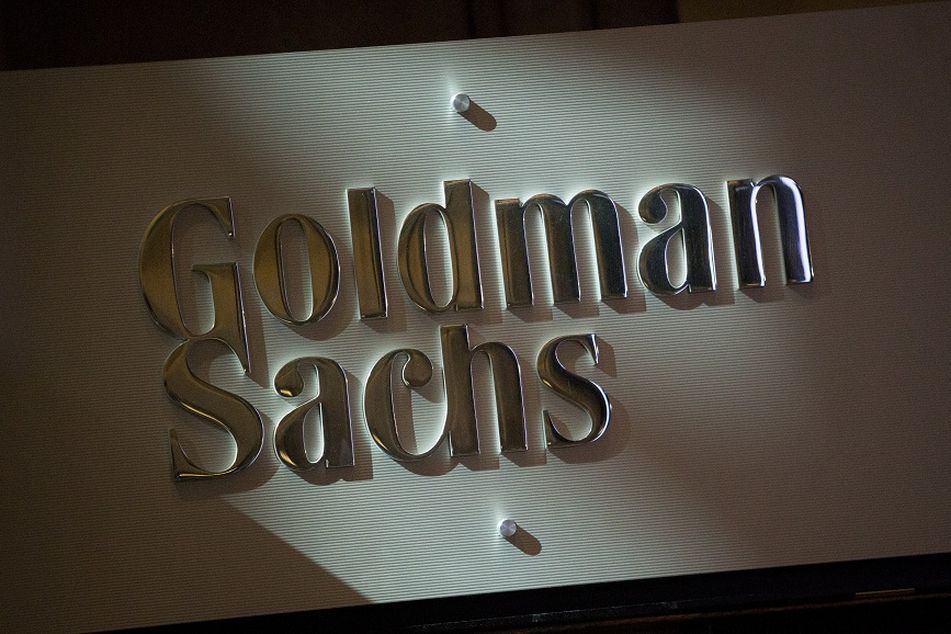Goldman Sachs has what other 401(k) firms want
 The Goldman Sachs & Co. logo is displayed at the company's booth on the floor of the New York Stock Exchange (NYSE) in New York, U.S., on Friday, July 19, 2013. U.S. stocks fell after benchmark equities gauges rose to records yesterday, after disappointing earnings from Google Inc. and Microsoft Corp. overshadowed better-than-forecast results from General Electric Co. Photographer: Scott Eells/Bloomberg
The Goldman Sachs & Co. logo is displayed at the company's booth on the floor of the New York Stock Exchange (NYSE) in New York, U.S., on Friday, July 19, 2013. U.S. stocks fell after benchmark equities gauges rose to records yesterday, after disappointing earnings from Google Inc. and Microsoft Corp. overshadowed better-than-forecast results from General Electric Co. Photographer: Scott Eells/Bloomberg
The firm's suite of wealth management services can cater to the full spectrum of 401(k) participants.
Goldman Sachs is poised to reap big profits from the 401(k) market. I’m not talking about its traditional asset management business, however — it’s in wealth management that the firm could make its biggest mark.
To many 401(k) industry executives, consultants and financial advisers, 401(k) participants represent the profit engine of the future, especially as margins continue to shrink in other business lines.
Battle lines are emerging in the race to manage the household wealth of these retirement savers, whether through a full-blown, high-touch service for ultra-high-net-worth business owners or a more hands-off, digital approach for the rank and file. Goldman has positioned itself as an early front-runner in this 401(k) profit war through various business lines that give it access to employees across the wealth spectrum.
Goldman Sachs Private Wealth Management and The Ayco Co. can cater to high-net-worth and ultra-high-net-worth employees. Goldman’s acquisition of United Capital, announced in May, gives it a firmer foothold among mass-affluent and high-net-worth clients. Goldman also bought Honest Dollar, a digital retirement-savings platform, in 2016 and personal-finance app Clarity Money last year, both of which can help it cater to the more average employee.
Goldman executives have also been clear about their aspirations to offer a digital wealth management service through Marcus, the firm’s online bank catering to mass-affluent clients.
Crucially, in November Goldman announced its acquisition of Rocaton Investment Advisors, which advises on roughly $600 billion in client assets. About a third of that total is in defined-contribution plans, which offers Goldman more of an entry point into 401(k) plans.
“To me, that’s a clear top-to-bottom stack to engage individuals,” said Dick Darian, CEO of consulting firm The Wise Rhino Group. “These are all very strategic buys that fit in a spot from top to bottom, from CEO to the first-day employee out of college.”
“No one else has really built this stack yet,” Mr. Darian added. “I think they are the furthest along.”
In a May 31 investor presentation, Goldman president and COO John Waldron said broadening wealth management, both digitally empowered and adviser-led, is a key priority for the firm.
Other firms seem to have caught the same whiff of profits and are positioning themselves for the same play for 401(k) participants.
Private-equity firm Hellman & Friedman bought 401(k) managed-account provider Financial Engines last year for $3 billion, and combined it with registered investment adviser Edelman Financial Services. New York-based wealth manager Cerity Partners bought $11 billion retirement-plan shop Blue Prairie Group earlier this year. Captrust, which has more than $250 billion in DC assets, is strategically buying up more wealth management firms. And the vast majority of record keepers have built out financial wellness services for participants.
It’s a model more and more companies, whether they’re asset managers, record keepers or advisory firms, are bound to try replicating as profits continue to get squeezed by fee compression and plan sponsors’ demand grows for financial help for their employees.
“The evolution of the marketplace, it kind of went from defined benefit to defined contribution to now financial wellness,” said Paget MacColl, managing director and co-head of Goldman’s Americas institutional client business.
“In order to deliver financial wellness, which is thinking about individuals and participants more holistically, you need all those pieces,” she added, referring to the wealth stack.
To these firms, 401(k) participants represent a captive audience, and a largely untapped market, to which they can sell wealth management services. Most 401(k) advisers are the only financial advisers with which the average participant will communicate. And only 17% of Americans manage their money with the help of an adviser, according to a joint CNBC-Acorns survey published in April.
As an additional benefit, financial services firms can leverage such services as a distribution vehicle to sell asset management products. Through Honest Dollar, for example, Goldman recommends portfolios constructed by its in-house Investment Strategy Group.
So keep an eye on how companies angle to reach and profit from 401(k) participants. Goldman is an early front-runner, but bet on competitors to try mighty hard to leapfrog the firm.
Learn more about reprints and licensing for this article.








